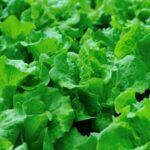Having a lush and vibrant vegetable garden is the dream of many gardeners, but the presence of grass can often hinder the growth and productivity of these plants. In this article, we will delve into the world of grass control in vegetable gardens and explore why it is crucial for successful gardening. We will discuss the negative impact that grass can have on vegetable garden growth, as well as highlight the need for effective grass control methods.
When it comes to growing vegetables, competition for essential resources such as nutrients, sunlight, and water can significantly affect their development. Unfortunately, grass is a formidable competitor in this regard. Its fast-growing nature allows it to out-compete vegetables for these vital resources, leading to stunted growth or even death of your precious plants. Moreover, not only does grass compete with vegetables for resources, but it can also introduce pests and diseases into your garden, further compromising plant health.
In light of these challenges, understanding how to effectively control grass becomes paramount for any serious vegetable gardener. By implementing proper grass control measures early on in the gardening process, you can ensure that your vegetables have the best possible chance of thriving. Throughout this article, we will explore various methods for getting rid of grass in vegetable gardens while considering both conventional and organic approaches.
The battle against unwanted grass may seem daunting at first but fear not. With a combination of knowledge and practical techniques at your disposal from this article’s comprehensive outline, you will be well-equipped to achieve a successful grass-free vegetable garden. So let us dive deeper into the world of grass control and discover how you can create an environment where your vegetables reign supreme.
Why Grass in Vegetable Gardens Can Be an Issue
Grass can be a significant issue in vegetable gardens due to its ability to compete with vegetables for essential resources such as nutrients, sunlight, and water. When grass is present in the garden, it can hinder the growth and development of vegetable plants, leading to reduced yields and overall poor health.
Competition for Resources
One of the main problems posed by grass in vegetable gardens is its competition for resources. Grass has an extensive root system that competes with vegetable plants for nutrients from the soil. As a result, vegetables may not receive an adequate amount of nutrients needed for their optimal growth and productivity.
Additionally, grass can steal sunlight from vegetables as it grows taller and shades them out. This reduces photosynthesis in vegetables and further hampers their ability to produce energy for growth.
Pests and Diseases Introduction
Another issue associated with grass in vegetable gardens is its potential to introduce pests and diseases. Grass can harbor various insects, fungi, and pathogens that can transfer to vegetable plants when they come into close contact. This could lead to infestations or diseases that harm or even kill the vegetables.
For example, some grass species may attract pests like cutworms or aphids that can devastate young tender crops. The introduction of such pests may necessitate additional pest control methods to protect the vegetables.
To address these issues caused by grass invasion, it becomes essential for gardeners to implement effective grass control methods in their vegetable gardens. By doing so, they can ensure optimal growth and productivity of their vegetable crops while minimizing the risks of pest infestation or disease outbreaks associated with grass presence.
Identifying Common Grass Species in Vegetable Gardens
One of the first steps to effectively control grass in vegetable gardens is being able to identify the common grass species that invade these spaces. By familiarizing themselves with the distinguishing features and characteristics of these grasses, gardeners can take proactive measures to prevent their growth and minimize their impact on vegetable plants.
Some of the most common grass species found in vegetable gardens include Bermuda grass, crabgrass, quackgrass, and annual bluegrass. Bermuda grass is a warm-season perennial grass that spreads through seeds and rhizomes, making it a particularly tenacious invader in vegetable gardens. Crabgrass and quackgrass are both cool-season annual weeds that reproduce through seeds and have distinct growth habits. Annual bluegrass is another cool-season weed that thrives in moist conditions and produces copious amounts of tiny seeds.
To help gardeners identify these problem grass species, visual aids such as images and descriptions can be provided. For instance, Bermuda grass has wiry stems that grow horizontally along the ground, with roots forming at each node. Crabgrass has wide leaves that form rosettes close to the ground, while quackgrass has long, narrow leaves with pointed tips. Annual bluegrass is recognizable by its light green color, tufted appearance, and seed heads that resemble small spikes.
By understanding the characteristics and appearances of these common grass species in vegetable gardens, gardeners can promptly identify them before they become major issues. Early detection allows for quicker intervention and prevention strategies to be implemented effectively.
The Risks and Challenges of Using Herbicides for Grass Control
The use of herbicides for grass control in vegetable gardens comes with its own set of risks and challenges. While herbicides can be effective in eliminating unwanted grass, it is important to consider the potential harm they can cause to both the vegetable plants and the environment. Additionally, selective herbicide application in vegetable gardens can pose certain challenges. In this section, we will discuss these risks and challenges in detail.
One of the main risks associated with using herbicides in vegetable gardens is the potential harm to the vegetable plants themselves. Some herbicides may have a broad spectrum of activity, meaning they can harm or even kill not only the targeted grass but also the vegetables growing nearby. This is particularly concerning for gardeners who are growing vegetables organically or those who want to minimize chemical inputs in their garden.
In addition to harming vegetable plants, herbicides can also have negative effects on the environment. These chemicals can leach into the soil or be carried away by rainwater, potentially contaminating groundwater sources or nearby bodies of water. Furthermore, some herbicides can persist in the environment for an extended period of time, posing long-term risks to beneficial insects, wildlife, and ecological systems.
Selective herbicide application presents another challenge when it comes to controlling grass in vegetable gardens. Selective herbicides are designed to target specific types of weeds while leaving other desirable plants unharmed. However, achieving proper selectivity can be challenging because different grass species may respond differently to the same herbicide. Therefore, careful identification of the specific grass species present in the vegetable garden is crucial for selecting and applying appropriate herbicides.
Considering these risks and challenges associated with using herbicides for grass control in vegetable gardens, it is essential for gardeners to explore alternative methods that are safer for their plants and the environment. The following section will introduce organic and eco-friendly alternatives for grass control in vegetable gardens that allow gardeners to effectively manage unwanted grass without relying on synthetic chemicals.
Organic Grass Control Methods for Vegetable Gardens
Introduction to Organic Grass Control Methods
Grass control in vegetable gardens is crucial for maintaining the health and productivity of vegetable plants. While herbicides can be effective, they may also harm the environment and vegetable plants themselves. This is why many gardeners are turning to organic grass control methods as a safe and eco-friendly alternative. In this section, we will explore various organic methods that can help keep grass at bay in your vegetable garden.
Cultural Methods: Mulching, Hand Weeding, and Organic Weed Control Products
One effective way to control grass organically is through cultural methods. Mulching is a popular technique that involves covering the soil around vegetable plants with a layer of organic material such as straw, wood chips, or compost. Not only does mulch suppress grass growth by blocking sunlight, but it also helps conserve moisture and prevent weed seed germination.
Hand weeding is another vital method for eliminating grass from your vegetable garden. It requires regular monitoring and manual removal of grass using your hands or a small gardening tool. Be sure to pull the entire grass plant from the root to prevent regrowth.
If you prefer using products, there are various organic weed control options available on the market. These products typically contain natural ingredients such as vinegar or citrus oil that can kill grass without harming vegetables. Always read and follow the instructions on the product label for safe and effective use.
Organic Grass Control Tips
To enhance the effectiveness of these organic methods, consider implementing some additional tips:
- Create clear boundaries: Use physical barriers such as edging materials or raised beds to separate your vegetable garden from surrounding areas where grass may encroach.
- Regular maintenance: Stay vigilant about regularly monitoring your garden for any signs of grass intrusion. By catching it early, you can prevent it from spreading and establishing deep roots.
- Good hygiene practices: Clean gardening tools before and after use to avoid transferring grass seeds from one area to another. Also, dispose of any grass clippings or pulled grass plants away from your vegetable garden.
By incorporating these organic methods and following these tips, you can effectively control grass in your vegetable garden while maintaining the health and vitality of your precious vegetables.
Mechanical Grass Control Techniques
In the battle against grass in vegetable gardens, mechanical control techniques can be effective methods to combat its growth. Two commonly used techniques are tilling and cultivating. These practices not only help control grass, but also improve soil structure and promote healthy plant growth. However, it is important to implement these techniques correctly to avoid damaging the vegetable plants.
Tilling is a technique that involves breaking up the soil using a mechanical tool, such as a tiller or garden fork. This process helps uproot and bury grass plants, preventing them from regrowing. Tilling should be done when the soil is dry enough to crumble easily but not too wet that it becomes compacted. It is recommended to till the garden in early spring before planting vegetables and again after harvesting crops in the fall.
Cultivating, on the other hand, refers to regularly stirring or breaking up the soil surface around vegetable plants throughout the growing season. This technique disrupts weed growth by uprooting young grass seedlings before they have a chance to establish themselves.
Using a small hand cultivator or hoe, gently stir or scrape the top layer of soil around your vegetables, being careful not to damage their roots. Cultivating should be done regularly during dry weather conditions to ensure that weed seedlings dry out and die after being exposed.
When implementing tilling and cultivating as grass control methods, it is essential not to overdo it. Excessive tilling can lead to soil erosion, nutrient loss, and destruction of beneficial organisms like earthworms. Similarly, aggressive cultivating can harm delicate vegetable roots and disturb the balance of moisture in the soil. It’s important to strike a balance between keeping weeds at bay and maintaining overall soil health.
By employing these mechanical grass control techniques correctly and with care, you can effectively minimize grass presence in your vegetable garden while promoting optimal conditions for your crops’ growth. Alongside other organic methods, such as mulching and hand weeding, mechanical control can help you achieve a healthy and flourishing vegetable garden.
Creating a Barrier
One effective method for controlling grass in vegetable gardens is the use of barriers such as landscape fabric or cardboard. These barriers create a physical barrier between the soil and the grass, preventing it from growing and invading the vegetable garden. Both landscape fabric and cardboard have their advantages and can be used depending on the specific needs of the garden.
Using landscape fabric is a popular choice for many gardeners. This non-woven synthetic material is designed to allow water and air to pass through while blocking out sunlight. By covering the soil with landscape fabric, you can effectively suppress weed growth, including grass. The fabric can be easily cut to fit around existing plants or rows, making it convenient to install in any vegetable garden layout.
To use landscape fabric as a grass control barrier, follow these steps:
- Prepare the soil: Remove any existing weeds or grass from the area where you plan to install the fabric.
- Cut the fabric: Measure and cut pieces of landscape fabric according to your garden layout, ensuring that edges overlap by at least 6 inches.
- Secure the fabric: Place the cut fabric over the soil and secure it with garden staples or rocks along the edges. Avoid pressing down too firmly on delicate vegetable plants when securing the fabric.
- Cut planting holes: Use a sharp knife or scissors to make X-shaped cuts in the fabric where you want to plant your vegetables.
- Planting: Gently fold back each flap of the X-cut to expose enough soil for planting your vegetables.
- Mulching: Cover the fabric with a layer of organic mulch such as straw or wood chips, which will further suppress weed growth.
Cardboard can also serve as an effective barrier against grass invasion in vegetable gardens. It is an eco-friendly option that repurposes waste materials while providing excellent weed control benefits. Cardboard blocks out sunlight and creates a thick layer that prevents grass from sprouting through.
To use cardboard as a grass control barrier, follow these steps:
- Prepare the area: Remove any existing weeds or grass from the vegetable garden area.
- Collect and flatten cardboard boxes: Gather large pieces of cardboard and remove any tape or staples. Flatten the boxes to eliminate gaps.
- Lay down the cardboard: Place the flattened cardboard pieces directly on top of the soil, overlapping them slightly to ensure complete coverage.
- Wet the cardboard: Thoroughly soak the cardboard with water to help it conform to the contours of the ground and prevent it from blowing away.
- Anchor the cardboard: Secure the edges of the cardboard with rocks or soil to hold it in place.
- Cut planting holes: Use a sharp knife or scissors to cut X-shaped holes in the cardboard where you intend to plant your vegetables.
- Planting: Fold back each flap of the X-cut, dig a hole in the exposed soil, and plant your vegetables as usual.
- Mulching: Cover any remaining exposed areas of cardboard with organic mulch, such as straw or wood chips.
By creating a barrier using landscape fabric or cardboard, you can effectively prevent grass from infiltrating your vegetable garden and competing with your crops for nutrients, water, and sunlight. These methods are eco-friendly alternatives that do not rely on harmful chemicals while still providing effective grass control solutions for your garden.
Maintaining Grass-Free Vegetable Gardens
Keeping a vegetable garden free from grass is essential for ensuring the healthy growth and productivity of your plants. Uncontrolled grass can compete with vegetables for crucial resources such as nutrients, sunlight, and water, stunting their growth and reducing their yield. To maintain grass-free vegetable gardens, it is important to follow best practices that effectively eliminate grass while protecting the health of your vegetables.
One of the most important best practices in maintaining a grass-free vegetable garden is regular monitoring. Keep a close eye on your garden to detect any signs of grass invasion early on. This allows for prompt intervention before the grass has a chance to establish and spread. Regular monitoring also helps identify any potential weed seeds or rhizomes that may have been introduced into the garden through mulch or compost.
Early intervention is key when it comes to controlling grass in vegetable gardens. As soon as you spot any grass, take immediate action to remove it. Manual methods such as hand weeding are effective for small patches of grass. Make sure to pull out both the roots and shoots of the grass to prevent regrowth.
In addition to manual weeding, cultural methods can also be employed to control grass in vegetable gardens. Mulching is an effective technique that not only prevents new weeds from growing but also helps smother existing ones by blocking out sunlight. Apply organic mulch materials such as straw, wood chips, or shredded leaves around your vegetable plants, making sure to leave some space around stems for air circulation.
Organic weed control products can also aid in maintaining a grass-free vegetable garden without harmful effects on your crops or the environment. These products are usually made from natural ingredients such as vinegar, citrus oils, or corn gluten meal. They work by targeting unwanted weeds while leaving your vegetables unharmed.
By implementing these best practices regularly and consistently, you can ensure that your vegetable garden remains free from invasive grasses. Remember to stay vigilant, intervene early, and employ a combination of manual weeding, cultural methods like mulching, and the use of organic weed control products. Following these practices will help your vegetables thrive and ensure a bountiful harvest.
Conclusion
In conclusion, grass control is a crucial aspect of maintaining a successful vegetable garden. Throughout this article, we have explored the negative impact that grass can have on vegetable growth, from competing for essential resources to introducing pests and diseases. We have also discussed the risks and challenges associated with using herbicides for grass control, highlighting the importance of organic methods that are safe for both plants and the environment.
Fortunately, there are various effective grass control methods available to vegetable gardeners. Organic alternatives such as mulching, hand weeding, and organic weed control products provide safe and eco-friendly options for keeping grass at bay. Additionally, mechanical techniques like tilling and cultivating can help manage grass without causing harm to vegetable plants.
Creating barriers using landscape fabric or cardboard can act as a preventive measure against grass invasion. Proper installation and maintenance of these barriers can significantly reduce weed growth in vegetable gardens. And by implementing regular monitoring, early intervention, and maintaining proper garden hygiene practices, gardeners can ensure long-term success in keeping their gardens grass-free.
In order to achieve grass-free success in vegetable gardens, it is important for readers to implement the methods discussed in this article. By sharing their own experiences and tips with others in the gardening community, readers have the opportunity to contribute to a collective knowledge base that will benefit all vegetable gardeners. With proper grass control techniques in place, vegetable gardens will thrive and yield bountiful harvests for years to come.

If you’re looking to get into vegetable gardening, or are just looking for some tips on how to make your current garden better, then you’ve come to the right place! My name is Ethel and I have been gardening for years. In this blog, I’m going to share with you some of my best tips on how to create a successful vegetable garden.





